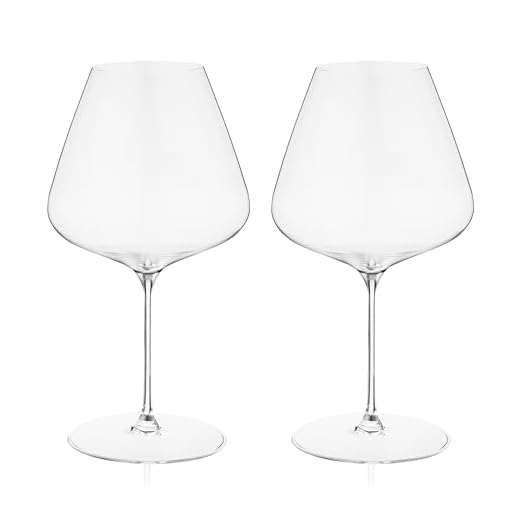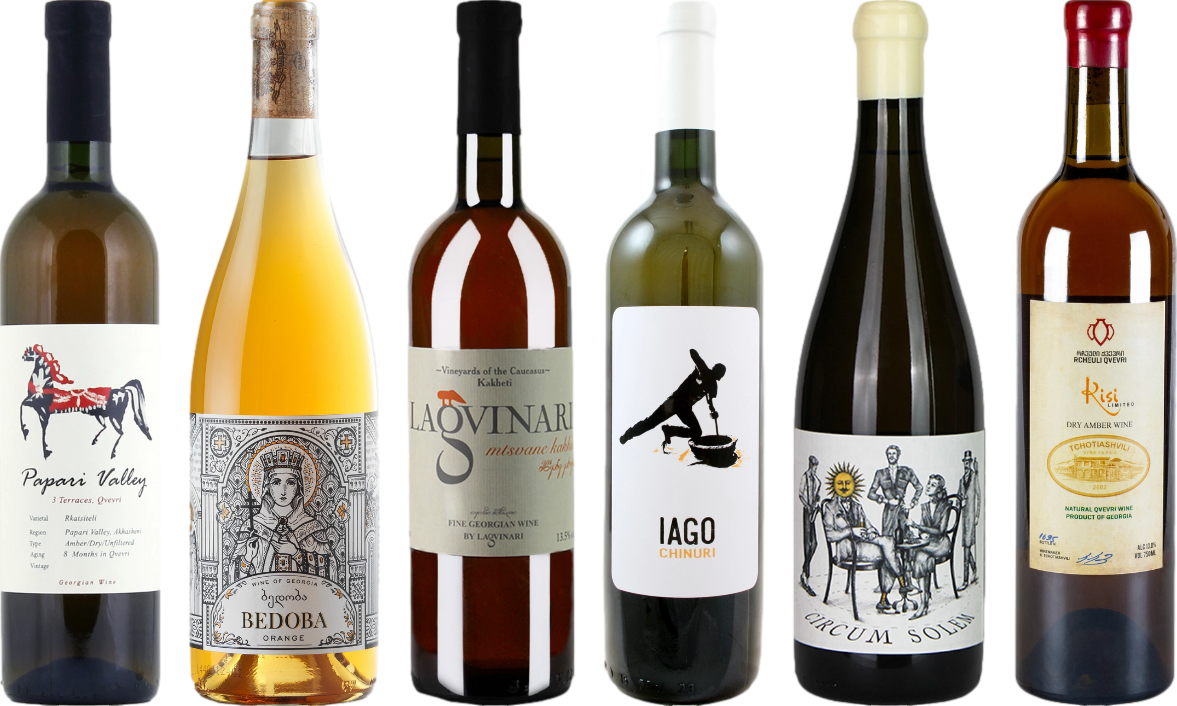



Cradle the bowl of the vessel, allowing fingers to grip gently yet securely, ensuring warmth from the hand does not affect the temperature of the contents. The stem serves as a perfect resting point for the thumb, providing stability and control. This grip enhances the overall experience, permitting a graceful swirl to aerate the beverage while minimizing contact with the surface.
Position the thumb on one side of the stem while the index and middle fingers rest on the opposite side. The ring and pinky fingers can either rest lightly below or wrap around the base, depending on personal comfort. This approach promotes an elegant posture, allowing for a refined tasting experience.
Maintain an upright stance, keeping the contents at eye level when assessing color and clarity. This method not only enhances the sensory evaluation but also elevates the presentation, making the act of sipping a true celebration of the craft within the glass.
Choosing the Right Glass for Red Wine
Selecting a suitable vessel significantly enhances the experience. Opt for a bowl-shaped design with a wider opening to facilitate aeration and release the aromatic compounds. This shape allows the bouquet to flourish, making it easier to appreciate the complex notes of the beverage.
Key Features to Consider
| Feature | Description |
|---|---|
| Bowl Size | A larger bowl accommodates swirling, which promotes oxygen interaction. |
| Opening Diameter | A wider rim enhances the olfactory experience, allowing aromas to escape. |
| Stem Length | A longer stem keeps the hand away from the bowl, preventing temperature transfer. |
| Material | Choose crystal or high-quality glass for clarity and brilliance, enhancing visual appeal. |
Types of Glasses
Various styles exist, including Bordeaux and Burgundy options. Bordeaux vessels are taller and narrower, suited for robust varieties, while Burgundy types are shorter and wider, perfect for delicate, aromatic selections. Always consider the specific characteristics of the variety being served to maximize enjoyment.
Understanding the Anatomy of a Red Wine Glass
A proper vessel is crucial for appreciating the nuances of a fine vintage. Key components include the bowl, rim, stem, and base, each serving specific purposes that enhance the tasting experience.
Bowl
The bowl is designed to hold and aerate the liquid, allowing aromas to develop. A wider bowl is ideal, as it provides ample surface area for oxidation, which can enhance flavors. Aim for a glass that tapers slightly at the rim; this concentrates the bouquet, directing scents towards the nose.
Rim
The rim should be thin and smooth, facilitating a seamless sip. A thinner edge minimizes the disruption of the wine’s flow, allowing for a more natural tasting experience. This detail may seem minor, but it significantly impacts how flavors are perceived.
Stem
The stem serves a practical function; it allows for a stable grip while preventing warmth from hands affecting the temperature of the wine. Hold the stem rather than the bowl to maintain the ideal serving conditions.
Base
The base provides stability and balance. A heavier base can enhance the overall feel of the glass, giving it a more substantial presence. This stability is particularly important during swirling, which helps aerate the wine further.
- Bowl: Wide for aeration and aroma development.
- Rim: Thin for an unobtrusive sip.
- Stem: Allows for a comfortable grip without altering temperature.
- Base: Heavy for stability during swirling.
Understanding these elements aids in selecting the right vessel for each pour, optimizing enjoyment and appreciation of the complexities within each bottle. Choose wisely, and the glass will elevate the experience significantly.
Correct Hand Position for Optimal Aeration
To enhance the bouquet and flavor of the beverage, place the stem between the thumb and forefinger while supporting the base with the palm. This grip prevents heat from the hand warming the contents, allowing for better temperature control. By holding the stem, the liquid can be swirled easily, increasing exposure to air and promoting aromatic development.
When swirling, keep the wrist loose to facilitate movement without spilling. A gentle circular motion will effectively aerate the drink, releasing its complexities. Ensure that the glass remains upright during this process to maintain an ideal level of liquid within.
This technique not only optimizes the sensory experience but also demonstrates an understanding of proper etiquette. The visual appeal of the swirling action adds to the overall enjoyment, enhancing the appreciation of the nuances in flavor and aroma.
Avoiding Common Mistakes When Holding a Wine Glass
Always grasp the stem instead of the bowl. This prevents heat from your hand affecting the temperature of the liquid inside. Holding the bowl can warm the beverage, altering its intended profile.
Avoid excessive gripping. A relaxed hold allows for better movement and aeration, enhancing the aromatic experience. Tension in your grip can restrict the flow of air, inhibiting the release of complex scents.
Be cautious about tilting the vessel too much while tasting. A slight angle is adequate for sipping, but excessive tilting may lead to spills and disrupt the tasting process. A steady approach ensures a more controlled experience.
Mind the position of your fingers. Ideally, fingers should be positioned below the bowl, ensuring stability without obstructing the view of the contents. This promotes an elegant presentation and allows for easy swirling.
Choose a suitable environment for tasting. Avoid overly bright lights or distracting backgrounds. A serene setting enhances focus on the aromas and flavors, facilitating a more immersive tasting experience.
Maintain cleanliness. Ensure the exterior of the container is free from smudges or fingerprints. A clean presentation reflects attention to detail and enhances the overall enjoyment of the experience.
Lastly, practice moderation. Sipping should be a leisurely process, allowing time to appreciate each nuance. Rushing through tasting can lead to missed opportunities to savor the complexities of the beverage.
Tips for Holding a Wine Glass at Social Events
Maintain an upright position for the vessel, ensuring the bowl is slightly tilted away from others to prevent spills. This also allows for a better appreciation of the aroma and color. When mingling, keep the stem between your fingers, avoiding contact with the bowl to prevent warmth from your hand affecting the contents.
Engage with Others Gracefully
While conversing, hold the base of the stem lightly to avoid clinking with others’ vessels. This creates a more intimate atmosphere without the distraction of noise. Make eye contact and maintain a relaxed posture to appear approachable and engaged.
Mindful Sipping
Take small sips to savor flavors, allowing for a more enjoyable experience. Swirling gently before taking a sip enhances the wine’s bouquet, encouraging discussion about its nuances. For a refreshing twist, consider pairing with a light snack, enhancing the overall experience. If curious about combining scents with cleaning products, check if can you safely combine zoflora with fabric conditioner find out now.
Maintaining Proper Glass Hygiene and Care
Rinsing the vessel with warm water before and after each use ensures removal of residues that can alter taste. Avoid using soap, as it may leave unwanted flavors. Instead, utilize a gentle brush designed for delicate glassware to clear stubborn stains.
Storing these vessels upright prevents dust accumulation inside. For long-term storage, consider using protective sleeves or boxes to minimize the risk of chipping or scratching. Ensure the storage area is dry and free from strong odors that might permeate the glass.
Inspecting the rim for chips or cracks is crucial, as these imperfections can affect the drinking experience. Regularly check for any signs of wear and replace any damaged pieces promptly to maintain the quality of service.
Cleaning in a dishwasher can be tempting, but hand washing is preferable for maintaining integrity. If using a dishwasher, select a gentle cycle and avoid high temperatures. Allowing to air dry is best; using a cloth can create lint that adheres to surfaces.
Regularly assess the cleanliness by observing the transparency. If a cloudy appearance develops, a vinegar solution can effectively restore clarity. This simple method eliminates mineral deposits without harming the material.
Consistent care and attention to these details will enhance the overall experience and enjoyment of fine beverages, ensuring that each sip is as intended by the winemaker.
FAQ:
What is the proper way to hold a red wine glass?
To hold a red wine glass correctly, grasp the stem between your thumb and forefinger. This prevents your hand from warming the bowl of the glass, which can affect the wine’s temperature and flavor. Keeping your fingers off the bowl also allows for a better grip and helps avoid spills.
Why is it important to hold the glass by the stem?
Holding the glass by the stem is important because it helps maintain the wine’s optimal temperature. Red wines are typically served at a slightly warmer temperature than white wines, but if you hold the bowl, the heat from your hand can raise the wine’s temperature too much. Additionally, holding the stem allows you to swirl the wine without interfering with the aroma or flavor.
Can I hold a red wine glass differently for casual settings?
In casual settings, people may hold the glass by the bowl without much thought, especially if they are enjoying a relaxed atmosphere. However, to fully appreciate the wine’s qualities, it’s still recommended to use the stem. If you’re at a formal gathering or a wine tasting, sticking to the proper technique shows respect for the wine and enhances your experience.
What are some common mistakes people make when holding a red wine glass?
Common mistakes include holding the glass by the bowl, which can warm the wine, and gripping it too tightly, which can lead to spills. Some people also tend to tilt the glass too much when swirling, which can result in spilling wine. To avoid these issues, focus on holding the stem gently and maintaining a stable position while swirling the wine to release its aromas.









